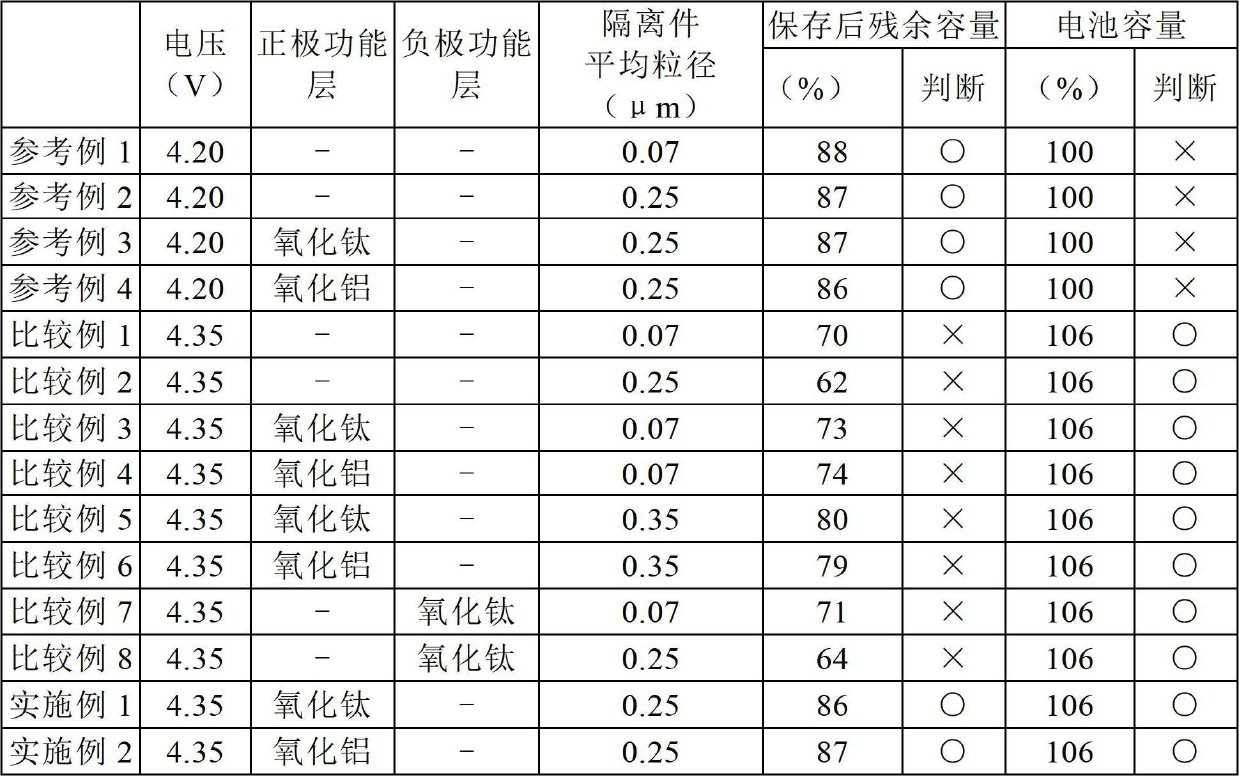Non-aqueous electrolyte rechargeable battery
A non-aqueous electrolyte and secondary battery technology, applied in the direction of non-aqueous electrolyte batteries, non-aqueous electrolyte battery electrodes, lithium batteries, etc., can solve the problem of capacity reduction, achieve excellent stability, low reactivity, and inhibit capacity degradation Effect
- Summary
- Abstract
- Description
- Claims
- Application Information
AI Technical Summary
Problems solved by technology
Method used
Image
Examples
reference example 5
[0075] [Reference Example 5, Comparative Examples 9 and 10, Examples 3 and 4]
[0076] Next, Reference Example 5, Comparative Examples 9 and 10, and Examples 3 and 4 using silicon as the negative electrode active material will be described.
[0077] [Production of positive electrode plate]
[0078] As the positive electrode plate, positive electrode plates produced in the same manner as in the above-mentioned Reference Examples 1 to 4, Comparative Examples 1 to 8, and Examples 1 and 2 were used. And, for the positive electrode plates of Reference Example 5, Comparative Example 9, Examples 3 and 4, the slurry formed by mixing alumina, water-soluble binder and water was applied to the above-mentioned On both sides of the prepared positive electrode plate, an inorganic particle layer with a thickness of about 0.5 μm to 3 μm is formed on the surface of the positive electrode plate.
[0079] [Production of negative electrode active material]
[0080] First, a polysilicon block w...
PUM
| Property | Measurement | Unit |
|---|---|---|
| pore size | aaaaa | aaaaa |
| thickness | aaaaa | aaaaa |
| thickness | aaaaa | aaaaa |
Abstract
Description
Claims
Application Information
 Login to View More
Login to View More - R&D
- Intellectual Property
- Life Sciences
- Materials
- Tech Scout
- Unparalleled Data Quality
- Higher Quality Content
- 60% Fewer Hallucinations
Browse by: Latest US Patents, China's latest patents, Technical Efficacy Thesaurus, Application Domain, Technology Topic, Popular Technical Reports.
© 2025 PatSnap. All rights reserved.Legal|Privacy policy|Modern Slavery Act Transparency Statement|Sitemap|About US| Contact US: help@patsnap.com



